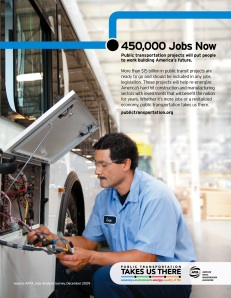$6.4 Billion in Security Needs Identified
Washington, DC – The American Public Transportation Association (APTA) today called on Congress to appropriate $1.1 billion for public transportation security funding in the fiscal year 2011 budget to help safeguard the millions of public transit riders from terrorist attacks.
In testimony before the House Appropriations Committee on Homeland Security, APTA President William Millar announced the results of a recent survey of public transit systems that identifies $6.4 billion in security needs and urged Congress to provide at least $1.1 billion in funding for fiscal year 2011, which is the level authorized under the Implementing Recommendations of the 9/11 Commission Act of 2007. Federal funding provided in fiscal year 2010 for public transportation security was $253 million.
“The terrorist attacks on transit systems in London and Madrid and the recent suicide bomb attacks in the Moscow subway are graphic reminders of the threats public transportation riders face,” said Millar. “Public transportation systems have taken many steps to improve security but almost 9 years since 9/11, we still need significant investment in order to protect our citizens who take 35 million trips each weekday on the nation’s public transit systems.”
Noting that only $1.25 billion of the $3.4 billion authorized in the 9/11 Act has been appropriated since it was enacted in 2007 and even less has been ultimately directed in grants to transit agencies, Millar said, “We do not need another wake-up call in public transportation. We need the financial resources to implement all we have learned since 9/11.”
The $6.4 billion in security-related investment needs identified in the survey includes $4.4 billion for capital investments and $2 billion for personnel and other operational expenses over the next five years. Examples of projects include closed-circuit television, chemical detection equipment, tunnel communication equipment, control center redundancy and equipment, and intrusion and perimeter monitoring and protection.

